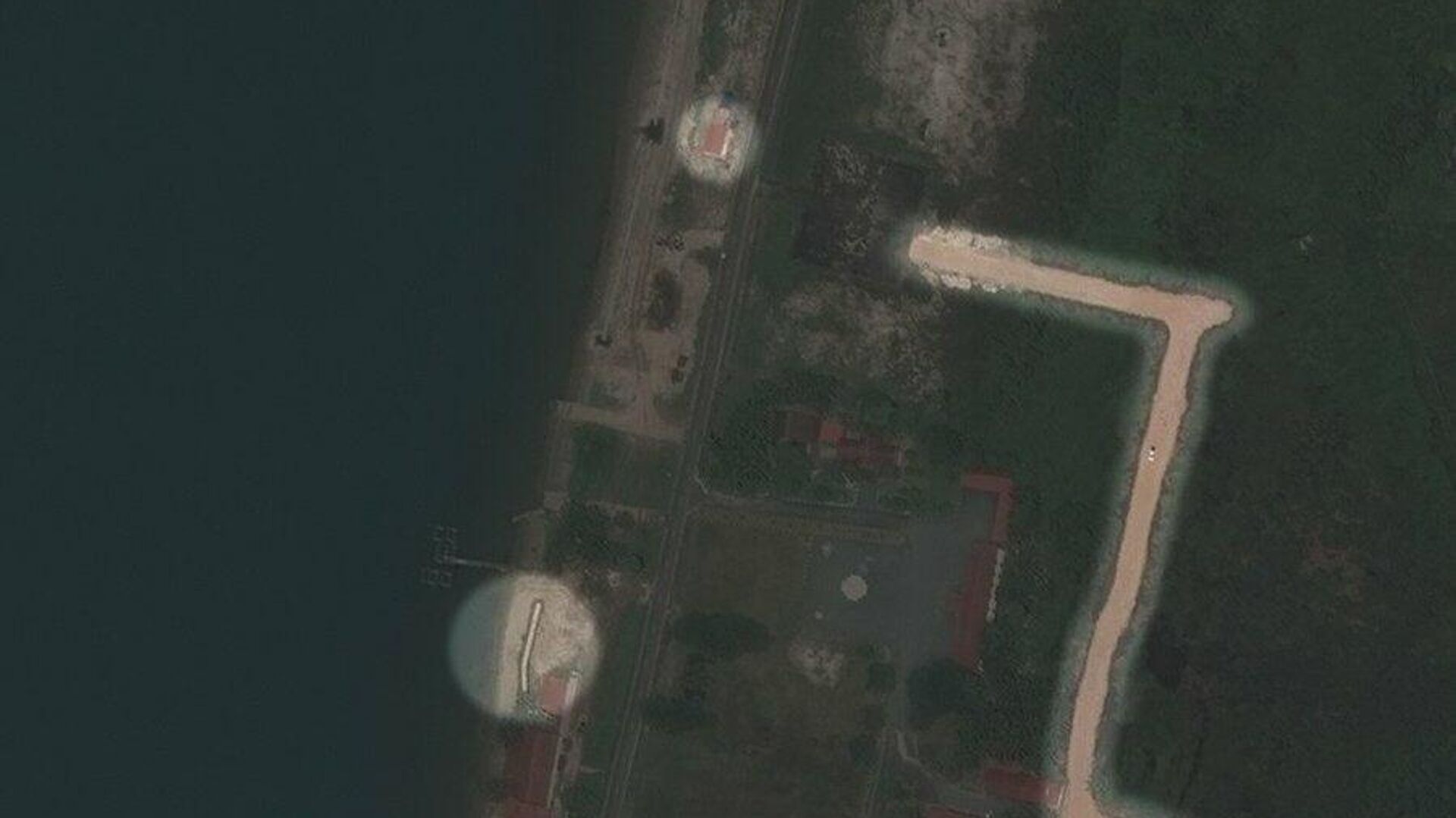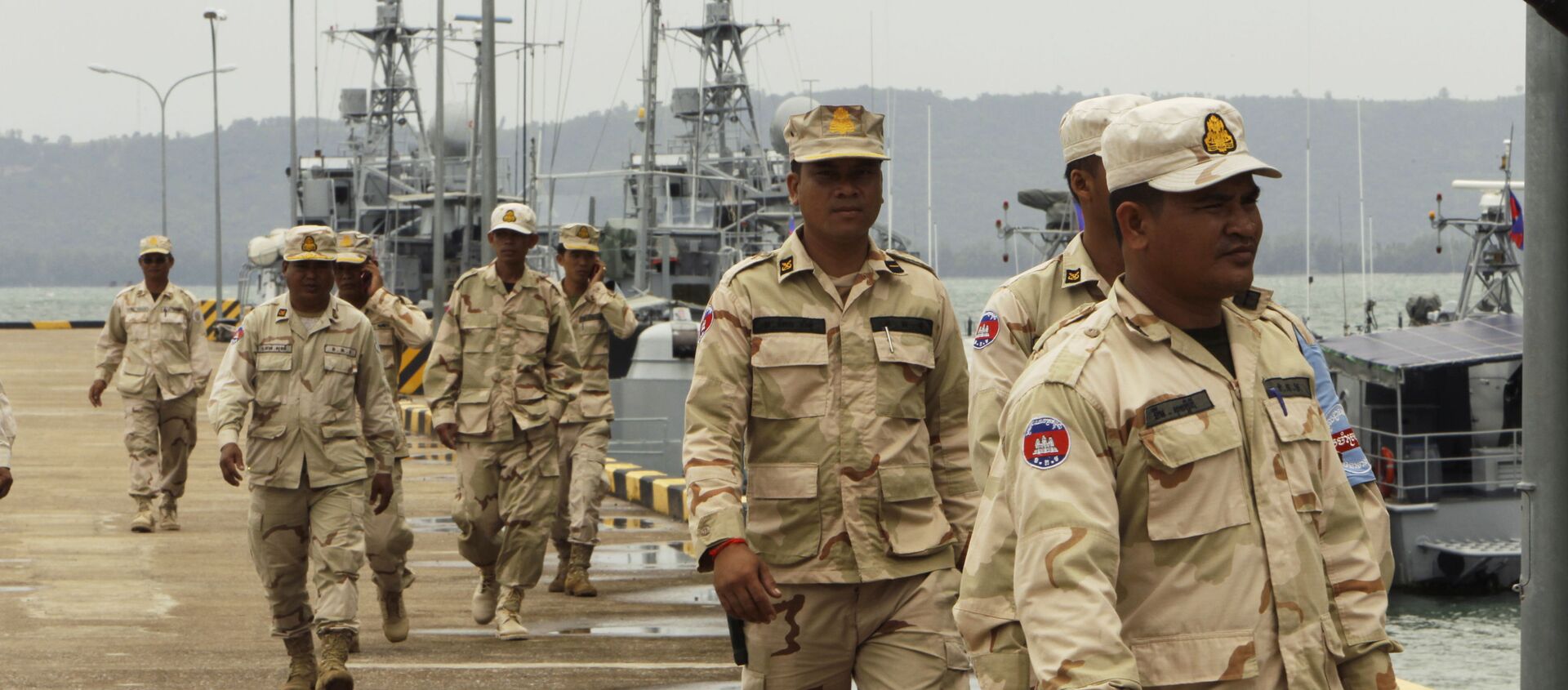Satellite Images Reportedly Show Chinese Construction at Naval Base in Cambodia Amid US Anger
10:35 GMT 15.10.2021 (Updated: 10:41 GMT 15.10.2021)

© Photo : AMTI
Subscribe
Cambodia and China began enhancing security cooperation in 2019, with the US State Department expressing “serious concerns” about the People’s Republic’s alleged military presence in the Southeast Asian nation, particularly amid the construction of new facilities at the Ream Naval Base.
A Washington-based think tank has published and analysed satellite images of Cambodia’s Ream Naval Base, and concluded that major new construction is taking place at the facility.
Studying snaps taken by US private Earth imaging firm Maxar, the Asia Maritime Transparency Initiative reported that within less than two weeks in the month August, two new buildings were erected along the coast in the base’s northern area – next to two others built earlier this year. Work was also started on a new road from the base’s southeast gate to the new facilities.
A channel was dug along the coast south near one facility, with its purpose unclear. The channel construction took place near the former site of the Cambodian Tactical Headquarters of the National Committee for Maritime Security (NCMS), which was demolished in late 2020 after being built with US help in 2012. Another US facility for the maintenance of rigid-hulled inflatable boats was also torn down in 2020 after operating for just three years.
UPDATE: Over the course of August and September, three new buildings have gone up and a new road has been cleared at Cambodia's Ream Naval Base, where concerns over possible Chinese military access linger amid Beijing-backed construction. https://t.co/C1w5qeHY6s pic.twitter.com/YRlRFN6AJ8
— AMTI (@AsiaMTI) October 15, 2021
The United States has expressed serious concerns about China’s military activities at Ream, starting with the publication of reports in US media alleging that Phnom Penh had quietly signed an agreement with Beijing to allow the People’s Liberation Army to station troops and equipment at the facility and expand its power projection capabilities in the Gulf of Thailand and Southeast Asia generally.
They Will Ream Us on This One
This June, US Deputy Secretary of State Wendy Sherman “sought clarification” about the demolition of two US facilities at Ream “without notification or explanation” and “expressed serious concerns about” China’s alleged military presence at the Cambodian naval base.
Cambodian Defence Minister Tea Banh responded by stressing that Phnom Penh’s cooperation with Beijing is of a “no strings attached” nature, and that China’s assistance was limited to helping to build infrastructure and engagement in dredging operations to allow for larger ships to dock at the base. The minister also stressed that China wouldn’t be the only country to have access to the installation.
Also in June, a minor diplomatic spat took place between Phnom Penh and Washington after US defence attache Marcus Ferrara walked out of a tour of Ream after being denied full access to its facilities.
Along with the Chinese construction activities at Ream, Chinese real estate companies have invested heavily in the nearby areas for the building of resort facilities. Last year, Cambodia’s Ministry of Land Management, Urban Planning and Construction announced the creation of a multi-billion dollar resort project in the area.
Chinese Foreign Minister Wang Yi visited Cambodia and other Southeast Asian nations last month in a bid to push the ratification of the Regional Comprehensive Economic Partnership Agreement. Cambodia has ratified the agreement, becoming the second of ten members of the Association of Southeast Asian Nations (ASEAN) to do so after Singapore. The new economic agreement, which promises to unite 30 percent of the world’s population and 30 percent of global GDP in a single common market, has also been ratified by China and Japan. For it to step into force, six of ten ASEAN members, and three of five non-ASEAN partners need to ratify it.




